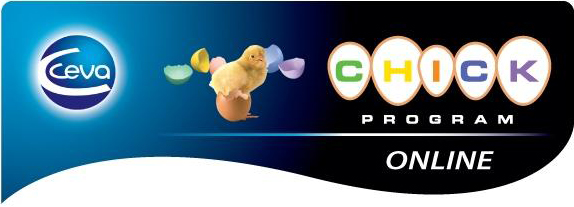The information below is presented by ThePoultrySite.com on behalf of CEVA SANTE ANIMALE.
If you wish to contact CEVA SANTE ANIMALE. please visit their contact page
If you wish to contact CEVA SANTE ANIMALE. please visit their contact page
Online Bulletins

2009

January - Multiple Stage/Single Stage Systems of Incubation, Advantages and Drawbacks
The poultry industry is always looking for ways to increase its productivity. Undoubtedly, the possibility of increasing the hatchability, and therefore the number of day-old chicks, and their quality by improving chick uniformity is very attractive.
In this way, companies are evaluating the possibilities of moving from the multiple-stage system towards the single stage system of incubation. Obviously, there are advantages and disadvantages in both systems and this article summarizes them.

March - Mycotoxins and Day-Old Chick Quality
Nowadays, the poultry industry gives a lot of importance to costs management at all the steps of production. In broilers, the production of hatching eggs or Day-Old Chick (DOC) does not represent a high proportion of the overall cost of production per kg of bird slaughtered. Nevertheless, the performance of broiler breeder is looked with a lot of attention, and the number of saleable chicks per hen is always very focused. But the quality of DOC and especially its influence on the improvement of their performance is a bit neglected. In general, the way that parental nutrition impacts the subsequent broiler performance is poorly studied: most of the time, egg fertility and hatchability are more emphasized.

May - The Benefits of Newcastle Killed Vaccines in Broilers
Newcastle Disease, along with avian influenza, is recognised worldwide as one of the two most destructive diseases in poultry. Newcastle Disease (ND) is found in many parts of the world in well-entrenched epidemic form. It represents a permanent threat to both farm and industrial rearing of poultry.

July - Day-old Chick Quality: Relationship to Hatching Egg Quality, Adequate Incubation Practice and Prediction of Broiler Performance
The weight and quality of the broiler chicks that emerges from the egg depend on several factors, which may include the broiler breeder age, egg storage conditions before incubation, and the incubation conditions.

September - E.Coli in Poultry Production
Escherichia coli is probably the most famous bacteria in broiler production …. Along with Mycoplasma, it is responsible for many economical losses (meat produced of antibiotics spent to fight against). Colibacillosis is indeed the most frequently reported disease in surveys of poultry diseases or condemnations at processing. Yogaratnam in 1995, for instance, showed that 43% of broiler carcasses condemned for disease at processing had lesions consistent with colisepticemia.

November - Reduction of Condemnations at Processing Plant Through Vaccination in the Hatchery
Total or partial condemnation of carcasses in the slaughter houses has always been a major concern for the poultry industry as it represents huge economical losses for companies. In the United States of America, losses due to cellulitis, an inflammation of the subcutaneous tissue of broilers (usually contaminated with Escherichia coli), exceed 35 million USD per year. Combined with other losses, from carcass downgrades, slowed processing line speeds and further processing expenses, total costs may exceed 70 to 80 million USD annually.
Moreover, the condemnation rates in the processing plants due to some particular causes tend to increase because of more intensive production practices adopted by the modern broiler producers. This is evident in a survey carried out in Canada, where, in 1986, 0.048% of broilers slaughtered in that country were condemned for cellulitis. Ten years later, in 1996, the level of condemnation due to the same problem had reached 0.586% of the carcasses. In 2004, these levels grew to 0.8% which means that approximately 4.7 million birds were lost to the marketplace due to cellulitis. Undoubtedly, cellulitis has become a leading condemnation category and therefore a major concern for broiler producers in recent years.
Because of these enormous losses, the broiler industry has constantly tried to improve the facilities, optimized the stock densities and even improved some management techniques. Furthermore, broiler producers seek continuously for new ways of reducing the condemnation rates at the slaughter house.
Recently, some trials have demonstrated that concentrating the vaccination in the hatchery and therefore reducing the number of vaccines applied in the farms can contribute to reduce the condemnation at the processing plant and consequently improve the profitability of the companies. This article will describe some of these trials and discuss their results.
GENERAL REMINDER: Product indications, usage instructions & withdrawal periods may vary by Country. Always follow label instructions and consult your veteriarian or poultry health adviser. |
|
This page contains information on veterinary pharmaceutical and biological products that are sold in several different countries and areas where they may be marketed under different trade names and pursuant to different regulatory approvals. Accordingly, ThePoultrySite and CEVA SANTE ANIMALE give no guarantee that the details presented are correct with respect to all locations.
|










